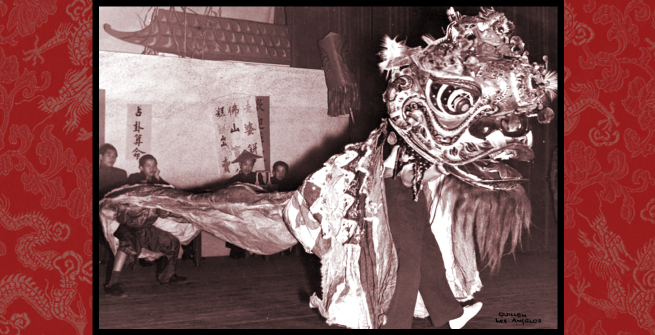Photographer Harry Quillen loved the circus, and during the 1940s, he enthusiastically captured the light-hearted spirit of the traveling show with his large format camera. After his death in 1972, his work was donated to the Circus World Museum in Wisconsin, but amongst his photographs of the aerialists, animals, clowns, and daily life in the tents and on the stages of the Clyde Beatty Circus, archivists discovered something else: hundreds of prints and negatives of the early days of Los Angeles' Chinatown.
Established in 1938, "New Chinatown" was the first of such communities to be funded, controlled, and operated solely by Chinese Americans. The architecture blended modern Chinese and American design aesthetics, including colorful neon, intricate wood carvings, and imposing statues. Central Plaza, considered to be the first outdoor mall, became the focal point and social hub of the community, hosting traditional lion dances and lantern festivals and featuring landmarks such as the Golden Pagoda and its famous Gateways. Harry Quillen attended the grand opening of New Chinatown in 1938 as well as the lion dances, lantern festivals, and other culturally significant events in the community, providing a valuable historical record of Chinatown as it was and as we know it today.
In honor of Asian American Pacific Islander Heritage Month, the Los Angeles Public Library's Photo Collection presents a selection of Harry Quillen's New Chinatown photographs, of which there are over 700 online on our Tessa database, that combine the neighborhood's shops, restaurants and landmarks with images of daily life among Los Angeles' Chinese American community in the 1930s and 1940s.








